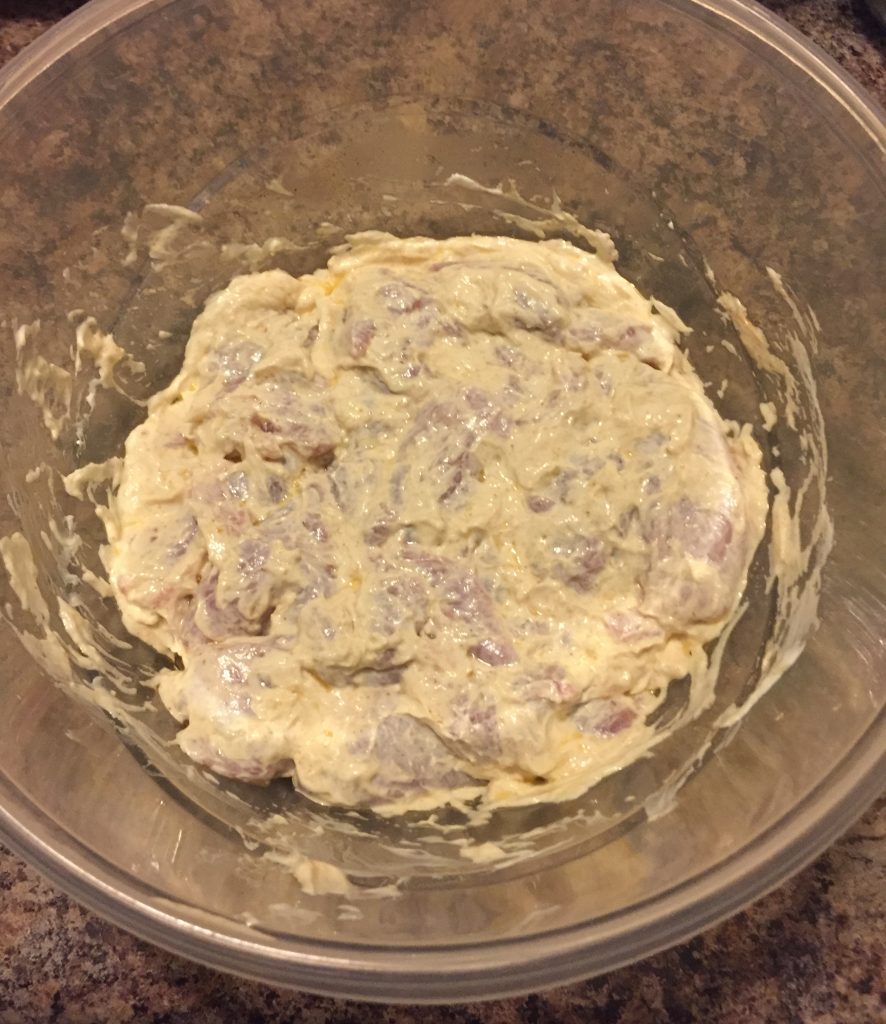
Tuesday night used to be steak night. Monday after work, I would go to the butcher and purchase a ribeye for one. That night I would mix up a marinade from a recipe I had found online, pour it in a Ziploc bag with the steak, and stick the sealed bag in the fridge. Tuesday was my busiest day, and I always spent it dreaming about dinner. It was heaven to come home to an already-prepped steak and be able to treat myself after a long day at work.*
A marinade is a mostly-liquid mix that imparts flavor and tenderness to a cut of meat by breaking down the proteins. For this reason, marinades always contain at least one acidic component, which is the predominant flavor. But you can also use more than one acid so that your meat doesn’t taste solely of, say, balsamic vinegar. To this acid you add spices for extra flavor and heat, salt, and a tablespoon or two of oil (usually olive oil), which helps to coat the meat. I also like my marinade to contain honey or brown sugar, but be careful with sweet components if you’re grilling over an open flame, as they can burn in a literal flash.
You can find many excellent ideas online, but marinade recipes can be intimidating because they often contain upwards of eight or nine ingredients. I’ve provided this post in case you’d like to try your hand at the technique but don’t want to fret over a recipe.
You Will Need:
- Raw meat of any type
- Acidic (sour) component(s)
- Such as balsamic vinegar, yogurt, citrus or pineapple juice, soy sauce, red wine vinegar, buttermilk (most common with chicken or fish), Worcestershire sauce, mustard, etc.
- Spices you like
- Such as garlic, ginger, hot peppers, black or cayenne pepper, onion powder, ground cumin, ground mustard, etc.
- Olive oil
- Salt (just a pinch–too much salt and you aren’t marinating any more, you’re brining)
- (Optional) Sweet component(s)
- Such as honey, brown sugar, barbecue sauce, etc.
Plastic zip-top bag or food storage container with lid
Standard set of measuring spoons and cups
Whisk or spoon from your silverware drawer, for stirring
(Optional) Knife and plastic cutting board for slicing boneless meat into smaller pieces

Steps
1. Figure out how long your meat will need to marinate. Delicate meats such as fish don’t need more than a half hour (though they can go for longer if necessary). Thicker meats such as chicken, beef, or pork can take anywhere from 30 minutes to overnight. Basically, the longer your meat sits in the marinade, the more tender and flavorful it is likely to be. Start early enough that you won’t have to sit around and wait before cooking.
2. Start crafting your marinade by combining acids/oil/spices/etc. (not meat) in a bowl. You need to make enough marinade to coat the meat once you add it, probably around 3/4 cup unless you have a really huge Porterhouse steak (which you probably don’t, because if you’ve spent the money on a giant steak, you’re probably also working from a step-by-step recipe). You want to work with the following ratios:
- Acidic components should equal about 1/2 – 3/4 cup. As a general rule, if this is your first marinade, don’t mix white acids with brown acids. You can combine balsamic vinegar and soy sauce, but you probably don’t want to add yogurt to that mix. Taste as you go to ensure that you don’t hate what you’re making.
- Add about 1/2 tablespoon of oil for every 1/4 cup of acid.
- Add small quantities of dried spices (1/4 teaspoon) and larger quantities of anything fresh (up to but not in excess of one tablespoon). If you’re dealing with a strong flavor, a little goes a long way.
- Add a pinch of salt. If you’ve already used a lot of soy and/or Worcestershire sauce, go easy on this amount or omit it entirely. On the other hand, if you have a yogurt/citrus base, you could add a little bit extra.
- If you’re including a sugary component, start with 1/2 tablespoon and work your way up if you think the marinade needs to be sweeter. Remember that sugar burns easily, so don’t overdo it.
3. Taste the marinade one more time before adding the meat. Do you like it? Could you see yourself eating a meal with this flavor? It will (and should) taste strong, but you want to make sure the flavors that jump out at you are flavors you like. If they aren’t, adjust by adding more of anything that contrasts with whatever seems too prominent.
4. Add the meat to the marinade. Some recipes recommend that you first chop the meat into smaller pieces, because more pieces means more surface area for the marinade to permeate. Don’t do this if you’re using a bone-in cut of meat, though, because the bones add extra flavor.
5. Using one hand (keep the other one clean so you can seal up your container!), rub the marinade into the meat until all sides are coated, then seal or cover the container. (If you’ve poured your marinade into a Ziploc with the meat, seal the bag first and then rub everything together–it will be less mess.) Refrigerate.
6. When it is time to cook the meat, remove it from the fridge and allow it to approach room temperature while your oven or pan preheats. Make sure to shake off excess marinade before putting the meat into a pan/roasting dish/grill, because the excess will burn easily. Throw out the excess marinade, cook your meat, let it rest a few minutes before serving, and enjoy!

* Note to purists: I’m from Texas, so I’m well aware that ribeye is equally delicious (my husband would say more delicious) with no marinade at all. But when I was younger, my dad used to marinate lamb and cook it on the grill. It’s a flavor I’ve never forgotten, and since my efforts with lamb have been fairly pathetic, I went with what I could manage.


